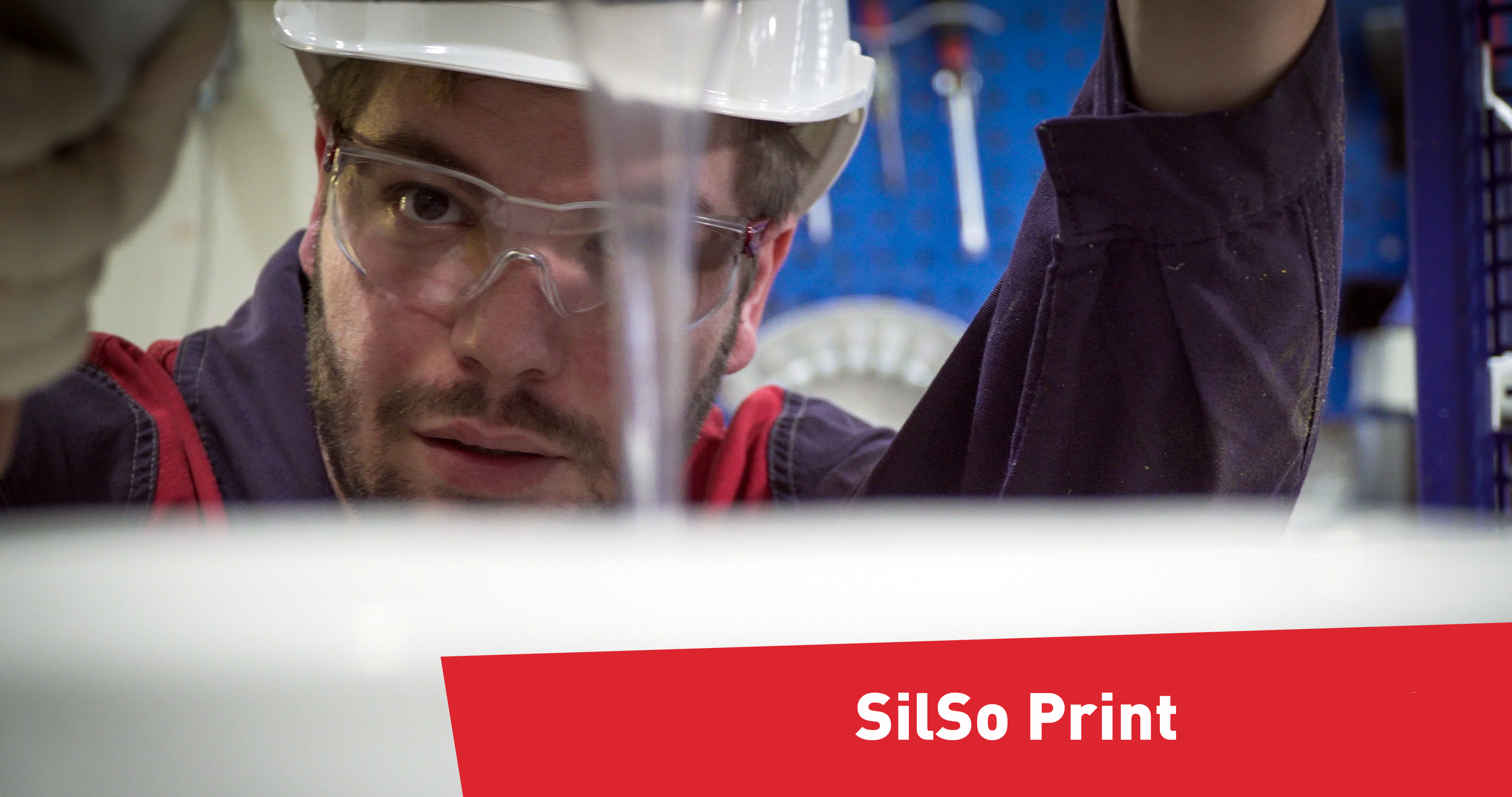ANTISTATIC SILICONE RUBBERS FOR PAD PRINTING
 The antistatic silicone elastomers developed by the CHT Group are composed of electrically conductive silicone polymers and specialty fillers. The RTV 2 silicone elastomers are designed to produce high quality printing pads.
The antistatic silicone elastomers developed by the CHT Group are composed of electrically conductive silicone polymers and specialty fillers. The RTV 2 silicone elastomers are designed to produce high quality printing pads.
The great variety of Shore hardnesses and the exact reproduction of the mould, produce a high-quality versatile printing process on common materials including:
- Porcelain
- All types of synthetic materials
- Electrical devices
The outstanding release properties of the silicones from organic and inorganic surfaces enable fine detailed reproduction by facilitating excellent transfer of the printing ink from the print pad. The silicone elastomers of the CHT Group have outstanding mechanical and chemical stability.
CHT have rebranded the Pad Printing grades using SilSo Print family name. Click here to read the Press Release and cross reference table for the new names.
Electrostatic Charge
In pad printing, it is important that the image produced is sharp, clear, with defined outlines and solid colour fill is achieved. Static charges may affect the print quality in various ways. Electrostatic discharge could also damage sensitive electronic components within the part being printed.
The antistatic properties of our silicone elastomers help prevent the following undesired effects:
- Adhesion of dust and dirt on the pads
- Ink splashes and a blurred print appearance
- Static discharge shock during printing
Advantages of CHT silicone rubbers:
- Antistatic properties
- High transfer capacity
- Good tear strength
- Very good stability to chemicals
- Very good mechanical properties
- Excellent release properties
- Various Shore hardnesses
- Simple handling
For additional information, download our CHT Tampo Pad Printing Brochure or for technical assistance and sample requests, please visit our contact page.
| Product | Description | Features |
|---|---|---|
| EM 2750L | Silicone emulsion for printing | Chemically inert - will not gum up heat set printing mills |
| MM50T | 2 part moulding compound | Soft resilient rubber |
| MM709 | 2 part moulding compound | Very soft moulding rubber |
| SilSo Print 21001 | 2 part, addition curing silicone elastomer for Pad Printing applications. | The product can be diluted by adding silicone oil (50 - 300 mPas), which reduces the viscosity and hardness of the material. |
| SilSo Print 21002 (ALPA-SIL TD ANTIST. SH. C:20) | 2-part silicone moulding rubber | Crosslinks at temperatures as of 23 °C/77°F |
| SilSo Print 21003 (ALPA-SIL TD ANTIST. SH. C:30) | 2-part silicone moulding rubber | Crosslinks at temperatures as of 23 °C/77°F |
| SilSo Print 21004 (ALPA-SIL TD ANTIST. SH. C:40) | 2-part silicone moulding rubber | Crosslinks at temperatures as of 23 °C/77°F |
| SilSo Print 21005 (ALPA-SIL TD SH. A 12 BLUE) | 2-part silicone moulding rubber | Easy 1:1 mix ratio |
| SilSo Print 21006 (KÖRAFORM PP 12) | 2-part casting compound | Crosslinks at temperatures as of 20 °C/68°F |
| SilSo Print 21007 (KÖRAFORM PP 18) | 2-part casting compound | Crosslinks at temperatures as of 20 °C/68°F |
| SilSo Print 21008 (KÖRAFORM PP 2) | 2-part casting compound | Crosslinks at temperatures as of 20 °C/68°F |
| SilSo Print 21009 (KÖRAFORM PP 6) | 2-part casting compound | Crosslinks at temperatures as of 20 °C/68°F |